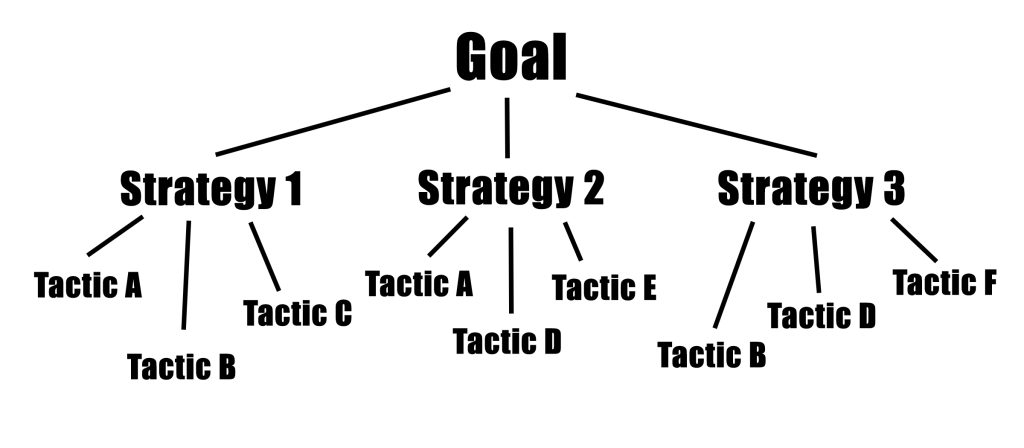Defining Features: Making sense of some important terminology
Kainan Jarrette and Diana Daly
Defining Features: Making sense of some important terminology
Learning Objectives
- Define misinformation, disinformation, and malinformation
- Explore their differences and similarities
- Define a strategy and a tactic
Introduction
When we talk about combating inaccurate information, it seems valuable to start by trying to prevent inaccuracy due to simple confusion. Especially with how quickly information can now get disseminated, it doesn’t take long for phrases and terms to develop split and often contradictory meanings. But, especially in an academic context, it behooves us to make sure that when we use terminology we all have the same understanding of what that terminology refers to. Therefore, we’re going to go over some key terms that we’ll be using a lot in this book.
Bad Info: Misinformation, Disinformation, and Malinformation
Section 1.1: Definitions
Although often used interchangeably in popular media, misinformation, disinformation, and malinformation technically have some very important differences, as well as some challenges in how and when they’re applied. Here, we’ll define what we mean by each:
- Misinformation is inaccurate information, but without any conscious intent to deceive the audience.
- Disinformation is inaccurate information, but with the intent to deceive the audience.
- Malinformation is inaccurate information with the intent to not only deceive the audience, but to cause harm to a specific person or group of people.
Section 1.2: The Ambiguity of Intent
One of the major difficulties with these terms is that they largely revolve around the idea of intent. However, unless the original author of a piece of information directly and publicly speaks to their intent, we can’t know with confidence what it is.
Further, one piece of content can be shared and disseminated by many people, each of whom may have their own motivations. For instance, let’s say someone (who we’ll call Author X) creates a piece of media content with false information with the express intent of harming a particular group. Well, in that context, Author X has created a piece of malinformation. But, let’s say after that content is originally posted, it’s seen and shared by someone else (who we’ll call Viewer Y). Viewer Y, though, believes the information in the content to be true, and so shares it with no intent to deceive. In that context, we’re speaking of misinformation — and yet the information and content hasn’t changed.
Given all of this, we will most typically be using the term misinformation when we refer to inaccurate and/or misleading content. There are a few exceptions in cases where we feel confident about intent, but on the whole we are choosing to not assume intent as a default. In this context, though, it’s important to understand that in this book, when we refer to something as misinformation, we are not asserting that there is definitely not intent, only that we don’t have enough evidence to claim otherwise.
Think About It!
Strategies and Tactics
Section 2.1: Definitions
In the next part of this book (“Online Lies and the Strategies that Spread Them”), we’ll be going over specific examples of misinformation, analyzing both the strategies and tactics it utilizes.
- A strategy is a plan involving multiple interconnected steps to accomplish a goal.
- A tactic is a step involving concrete action within a broader strategy or plan.
It’s important to note that there is a type of hierarchy here. A goal is singular, but can often be accomplished by more than one strategy. A strategy is necessarily comprised of tactics, but a tactic is not necessarily unique to a single strategy. We can also picture it like this:

Section 2.2: Examples
For additional clarification, we’ll try to develop an example to help illustrate these ideas, but from the perspective of being an author of misinformation content.
Let’s say there are two political candidates, A and B. You want candidate A to win, so you decide to make a video that will show people how bad candidate B is. Your goal, then, is essentially to get people to not vote for candidate B. But there are many ways to do this: you could try to make people afraid of him, you could try to make people angry at him, you could try to make people view him as stupid, and so on. These are the different strategies at your disposal. The strategy you pick for your first video is to try to make people afraid of him. But how are you going to to do that? You could tell people he’s a psychopath, you could tell people that if he’s elected the world will end, you could put ominous music under your video, you could use an out-of-context photo of him where he looks angry, and so on. These are the tactics you can use to employ the strategy you picked.
Fortunately for everyone, though, you ultimately get very sleepy and end up not creating any misinformation video at all.
Learning Objectives
inaccurate information, but with the intent to deceive the audience
inaccurate information with the intent to not only deceive the audience, but to cause harm to a specific person or group of people
inaccurate information, but without any conscious intent to deceive the audience
a plan involving multiple interconnected steps to accomplish a goal
a step involving concrete action within a broader strategy or plan
Media Attributions
- IT_GoalStrategyTactic_Fig01
inaccurate information that is spread without the intention to deceive
information intended to deceive those who receive it
inaccurate information with the intent to not only deceive the audience, but to cause harm to a specific person or group of people
a plan involving multiple interconnected steps to accomplish a goal
a step involving concrete action within a broader strategy or plan

